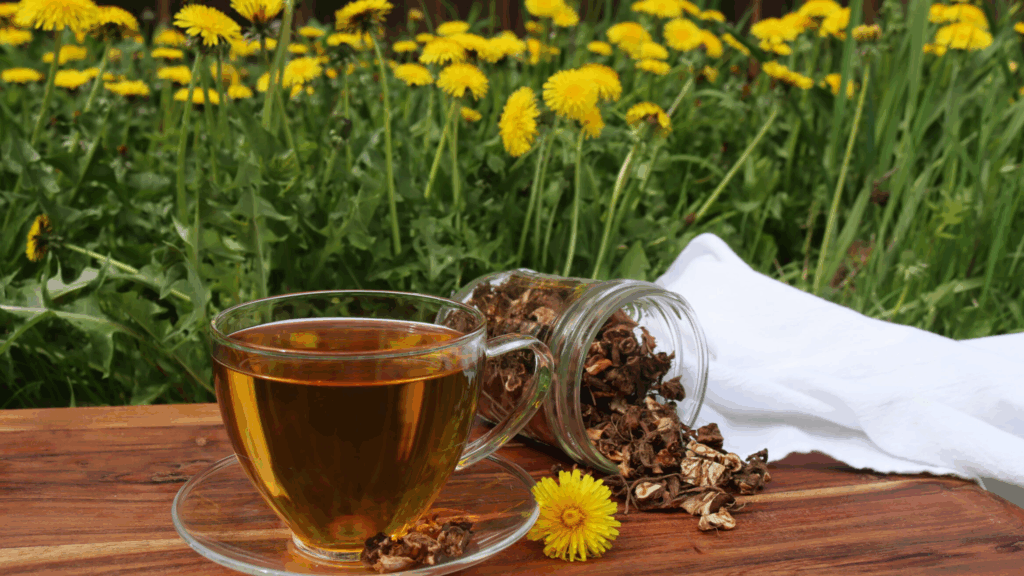A personal story of pain, awareness, and reclaiming my health one step at a time.
By Hafsa Saleem
@homesteadhafsa / @travelwildhafsa
Every woman needs to learn about this.
For months, I was having agonizing lower-back, pelvic and tailbone pain. It was so severe that I could barely walk some days. I couldn’t even carry half a bucket of water to our animals or bags of feed for our chickens and ducks outside without feeling like I was going to collapse.
At first, I thought I had just overexerted myself on the farm. But soon, I started noticing other symptoms, ones related to women’s health and my cycle, and I knew I needed to see a doctor.
My periods became unbearable. Most of my life they were already horrible. I used to miss school or work the first two days into my 20s because the pain and heavy bleeding were so bad. Now it was worse: the pain, fatigue, and nausea started days before and lingered for several days after.
I also began waking up in the middle of the night with sharp, stabbing pain in my lower abdomen whenever I emptied my bladder. It felt like someone was twisting a knife inside me. I honestly thought I was dying. Intimacy had to pause too because it led to severe pain afterwards.
That’s when I finally went to my OB-GYN for an exam.
The Diagnosis That Changed Everything
After waiting weeks for an ultrasound and MRI, my doctor told me I had uterine fibroids, which are tumors that grow inside or around the uterus.
They can be as small as a seed or as large as oranges or grapefruits.
Mine were the latter – multiple fibroids, the largest 9.5 cm, pressing against my organs and spine.
“Seeing the MRI scan with the fibroids was horrifying. Suddenly, everything made sense, the pain, the bloating, the fatigue.”
The moment I broke down:
The doctor explained my three options:
1️⃣ Surgery on my uterus (with no guarantee they wouldn’t return)
2️⃣ Birth control to manage symptoms (but risk fertility)
3️⃣ Strong pain medications (to mask the pain, not heal it)
I’m 36, and my husband and I want kids.
When the doctor said “surgery on your uterus,” I broke down crying right there in the office. The thought of potential complications during pregnancy, and the emotional trauma of surgery on my uterus, was too much to process.
I left the building in tears and cried hysterically all the way home.
For weeks, I cried every day, not just about the diagnosis, but everything it meant for my future: our plans for expanding the farm and retreats, becoming a mother, managing multiple businesses and traveling.
I also felt ashamed and confused about how to explain this to my family, who had been eagerly waiting for me to share the news with them that I am pregnant.
But beyond the emotional trauma, I was also frustrated that no one talks about this.
Up to 80% of women develop fibroids before menopause, yet most of us don’t even know we have them until they’ve grown large enough to cause pain.
We’re often given only life-altering options that don’t truly address the root cause.
Something inside me refused to believe surgery and hormones were my only options.
That’s when I decided to reclaim my health naturally – to learn, research, and heal my body from the inside out.
“Within two weeks of changing my daily routine, most of my pain was gone. I felt like I had my life back.”
Hitting Reset on My Body
I went down the rabbit hole of research, and what I found shocked me.
Fibroids are extremely common, but many women don’t know they have them until they’ve been growing for years.
I discovered that fibroids are often linked to estrogen dominance, stress, inflammation, and poor liver detoxification.
So, I decided to change everything that I could control – my diet, sleep, stress, and environment.
Exactly what I did:
😴 Sleep
Lights out by 9:30 PM. I stopped working late nights and created space for deep rest. For nearly two years I’d been running on stress and caffeine. I learned that sleep is when your body restores hormones, so healing starts here.
☕ Caffeine
No more black tea or coffee.
Cutting caffeine helped me lower cortisol and reduce liver strain — two key factors in balancing hormones naturally.
🥗 Diet Reset
I completely changed my diet, which I believe has been one of the most important steps.
- Gluten-free whole foods only
- No dairy, processed foods, pizza, ice cream, rice, or bread
- I already don’t drink alcohol, which is another key recommendation
- Cut out sugar and all processed foods. I cook everything from scratch.
- Avoid meat and focus on anti-inflammatory meals. I’ve been a pescatarian for 15 years, a diet that’s also supportive for hormone balance and fibroid healing.
My daily meals now:
🍳 Breakfast: Start early 7-8am with boiled farm fresh eggs from our chickens and ducks, followed by steel-cut oatmeal with flaxseed, chia, banana, and berries. Avoid starting the day with bagels or pancakes as they spike blood sugar.
🥦 Lunch & Dinner: Cruciferous vegetables like baked cauliflower or broccoli, sautéed spinach or kale, lentil soup, avocado, baked sweet potato, and wild-caught salmon or cod. I replaced rice and pasta with quinoa and bulgur.
🕔 All meals are done by 5–6 PM.
It’s important to finish eating early so your body can fully digest before bed. Sleeping with a full bladder or bowels can increase pressure and pain from fibroids pressing on them.
🍵 Herbal Support
Herbal teas have become one of my favorite parts of this journey, simple, gentle, and incredibly healing.
Throughout the day, I drink loose leaf herbal teas that support hormone balance, liver detox, and uterine health. Links to all organic high quality teas are below.
- 1 tsp dandelion root tea + 1/2 tsp mint tea (early morning)
- 1 tsp red raspberry leaf tea + 1 tsp nettle tea + 1/2 tsp mint tea (early afternoon)
- 1 tsp tulsi tea (holy basil) every other night after dinner
- Fennel tea every other night for help with digestion and gas
🌅 Morning – Dandelion Root + Mint Tea: Supports liver detox and estrogen balance, key for shrinking fibroids naturally. Dandelion helps the liver clear excess estrogen, while mint calms inflammation and aids digestion.
☀️ Afternoon – Red Raspberry Leaf + Nettle + Mint Tea: Red raspberry tones the uterus, eases cramps and heavy cycles. Nettle replenishes minerals lost during menstruation and supports adrenal health. Mint adds a soothing, anti-inflammatory touch.
🌿 Evening – Tulsi / Holy Basil Tea: An adaptogen that helps the body manage stress, lower cortisol, and support hormone balance. It promotes relaxation and emotional calm.
🌙 After Dinner – Fennel Tea: Eases bloating and digestion while supporting hormone balance. It promotes smoother elimination and reduces evening gas often caused by fibroids.
These have helped tremendously with inflammation and my overall well-being.
Also, drink plenty of water because if your urine turns orange, you are dehydrated!
💊 Supplements
After researching dozens of options, I created a supplement routine that supports hormone health and digestion without overwhelming my system. All supplement links are below.
Morning (with breakfast):
- My Happy Flo (2 capsules daily)
- Berberine with Milk Thistle (1 capsule)
- Culturelle 4-1 Probiotic for Women (1 capsule)
Evening (with dinner/after):
- Aphrodite Women’s Multivitamin (1 capsule)
- Berberine with Milk Thistle (1 capsule)
- Culturelle Bloating & Gas Defense (1 capsule)
- Ashwagandha Stress Relief (1 capsule an hour before bed)
💊 How each one helps:
1. My Happy Flo: Supports hormone balance and menstrual health. Contains Vitamin D, B6, B12, Magnesium, Zinc, and DIM from cruciferous veggies to reduce estrogen dominance and ease PMS and painful periods.
2. Ultra Herbs Berberine with Milk Thistle: Helps stabilize blood sugar and support liver detox. Berberine acts like a natural metformin for hormones, while Milk Thistle supports estrogen clearance.
3. Culturelle 4-1 Probiotic for Women: Restores gut health and hormone detox. A healthy gut helps your body eliminate used estrogen and reduce bloating.
4. Aphrodite Women’s Multivitamin: Nourishes energy, fertility, and hormone function. Rich in Iron, B-vitamins, Magnesium, and adaptogens like Maca and Ashwagandha to support stress and reproductive health.
5. Culturelle Bloating & Gas Defense: Eases digestion and bloating from high-fiber meals. Contains probiotics and enzymes that help nutrient absorption.
6. Ashwagandha: Supports stress balance, cortisol regulation, and deep sleep. It calms the nervous system and promotes hormone harmony.
Within two weeks of making these changes, without any medications, the pain that had been controlling my life was completely gone.
“I could walk again, sleep through the night and move freely without pain. I could function normally with my energy back and I felt like myself.”
PS If I had to choose just TWO of these supplements to start, I’d do My Happy Flo first because it helps with all issues related to period pains, fibroids and PMS.
Secondly, I would pick the Culturelle 4-1 Probiotic for Women because it helps to eliminate bloating and gas.
What This Experience Has Taught Me
It’s only been three months since my diagnosis, and this experience has taught me more than I ever expected.
It’s not just about fibroids, it’s about reconnecting with my body.
I’ve learned that healing requires rest, nourishment, and trust. Our bodies are always speaking, we just have to listen.
What started as a season of pain has become a journey of healing.
“Healing isn’t linear. It’s messy, emotional and deeply personal. When we create space to rest and nourish, the body responds in miraculous ways.”
What’s Next
My healing is ongoing.
I’m continuing my natural approach while preparing for my next step: a comprehensive full-body health check in Turkey and later, fertility preservation in Greece through IVF.
I’ll be sharing everything, from exams at the hospitals, wellness retreats, and slow-travel experiences that help me heal deeper, inside and out.
If you’re on a similar journey, please know this: you are not alone, and your healing doesn’t have to look like anyone else’s.
A Gentle Reminder
This is my personal story, not medical advice.
Always consult a qualified healthcare provider, ideally one who understands women’s hormones, fibroids, and fertility, before making any changes to your diet, supplements, or treatment plan.
Every woman’s body is unique. What has worked for me may not work for everyone, and that’s okay.
Yours truly,
Hafsa Saleem
@homesteadhafsa / @travelwildhafsa
This is Part 1 of 3 in this series.
Join my Insider list to get updates on the next blog posts.
Download the Free guide below and you’ll be added automatically.
Free Download
🌿 Healing from Fibroids Naturally
Want my full routine, supplement list and herbal tea recipes in one place?
✨ My daily healing schedule
✨ Links to everything I use
✨ Gentle reminders for rest, diet, and hormone support
This guide is meant to empower you, to help you take small, sustainable steps toward healing in your own time, in your own way.




October 13, 2025

Leave a Reply
Next POST
Previous POST
Let’s stay connected.
Follow me on Instagram @homesteadhafsa, @socialmediahafsa, and @travelwildhafsa.
Let’s Collaborate!
Please choose which brand you’re interested in partnering with. You’ll be sent to a short intake form and receive a follow up email after.
- Homestead Hafsa: homesteading, backyard chickens, sustainable living
- Social Media Hafsa: online business, marketing, content creation
- Travel Wild Hafsa: wellness, medical tourism, travel
Thank you SO much for sharing your journey and the steps you have taken towards healing.
I love that you are being so bold and sharing your journey. I wish I would have had someone like you when my husband and I were going through infertility. Literally no one knew and people just didn’t talk about it. I felt so alone and isolated.
I know so many women will not only be grateful for you sharing what you’ve learned, but also feeling like they can connect with you as you’ve walked through it.
Thank you Natalie for your heartfelt message, grateful to be able to help more women ❤️